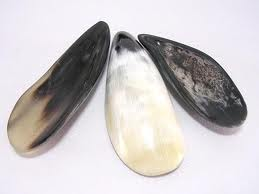Gua Sha ~ Per 15 minutes ~ $20.00
Gua Sha is a healing technique used in Asia by practitioners of Traditional Medicine, in both the clinical setting and in homes, but little known in the West. It involves palpation and cutaneous stimulation where the skin is pressured, in strokes, by a round-edged instrument; that results in the appearance of small red petechiae called ‘sha’, that will fade in 2 to 5 days.
Raising Sha removes blood stagnation considered pathogenic, promoting normal circulation and metabolic processes.The patient experiences immediate relief from pain, stiffness, fever, chill, cough, nausea, and so on. Gua Sha is valuable in the prevention and treatment of acute infectious illness, upper respiratory and digestive problems, and many other acute or chronic disorders.
When is Gua Sha used?
Gua Sha is used whenever a patient has pain whether associated with an acute or chronic disorder. There may be aching, tenderness and/or a knotty feeling in the muscles. Palpation reveals Sha when normal finger pressure on a patient’s skin causes blanching that is slow to fade. In addition to resolving musculo skeletal pain, Gua Sha is used to treat as well as prevent common cold, flu, bronchitis, asthma, as well as any chronic disorder involving pain, congestion of Qi and Blood.
Where is Gua Sha applied?
Sha is raised primarily at the Yang surface of the body: the back, neck, shoulders, buttocks, and limbs. On occasion, Gua Sha is applied at the chest and abdomen.
How is Gua Sha applied?
The area to be Gua Sha-ed is lubricated with oil. The skin is then rubbed with a round-edged instrument in downward strokes. One area is stroked until the petechiae that surface are completely raised. If there is no Blood stasis the petechiae will not form and the skin will only turn pink. For lubrication I use Vick’s Vapo-rub because my patients are familiar with its smell and are comforted by it. Thick oil such as peanut oil was used traditionally.
What kind of instrument is used to Gua Sha?
A soupspoon, coin, or slice of water buffalo horn is used in Asia. I have found that a simple metal cap with a rounded lip works best and is by far more comfortable to the patient.
What does the type of Sha indicate?
The color of the Sha is both diagnostic and prognostic. Very light colored Sha can indicate Deficiency of Blood. If the Sha is fresh red, it is of recent penetration. If the Sha is purple or black, the Blood stasis is long-standing. If brown, the Blood may be dry. Dark red Sha can indicate heat.
How fast will the petechiae fade?
The Sha petechiae should fade in 2-4 days. If it is slower to fade, indicating poor Blood circulation, the practitioner must ascertain whether it is deficiency of Blood, Qi or Yang, a deeper stagnation or organ deficiency at the root.
What are the benefits of Gua Sha?
In most cases the patient feels an immediate shift in their condition particularly in their pain or sense of constraint. Gua Sha moves stuck Qi and Blood, releases the Exterior mimicking sweating, and moves Fluids. In a modern medical construct these fluids contain metabolic waste that congested the surface tissues and muscles. Gua Sha promotes circulation and normalizes metabolic processes. It is a valuable treatment for both external and internal pain, and facilitates the resolution of both acute and chronic disorders.
Is Gua Sha Therapy Safe?
Gua Sha is a completely safe technique, but it is serious medicine. Knowing when to use it and what to expect from treatment is as important as good technique. People who live in chronic pain often erect emotional defenses to cope with it or can feel completely hopeless. Having that pain ‘touched’ and relieved can be unsettling, even shocking. It is good to be moderate in activity after treatment, even rest. I have always told my clients after treatment: no drugs, booze, sex, fasting, feasting or hard labor, including working out, for the rest of the day. In other words, mellow mode.





